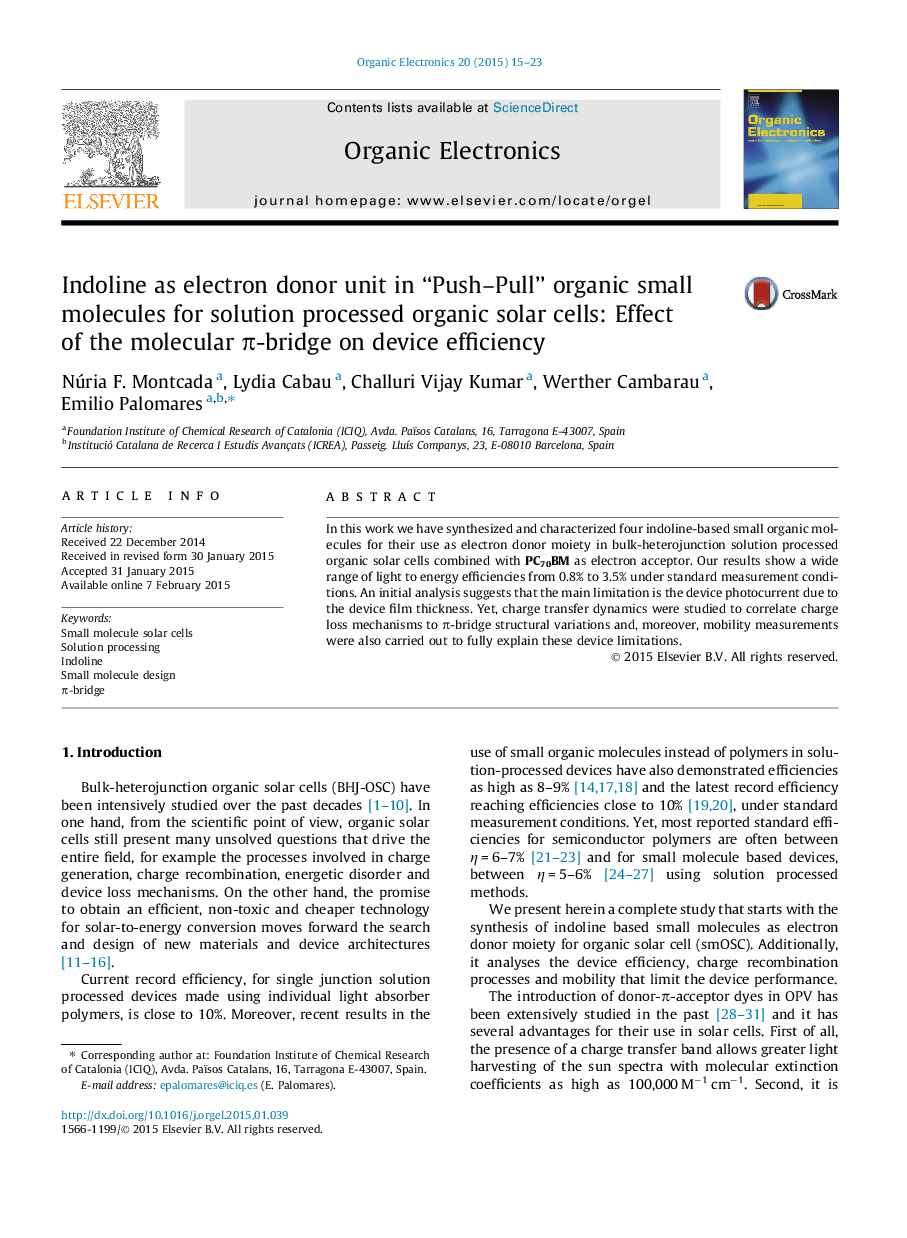| Article ID | Journal | Published Year | Pages | File Type |
|---|---|---|---|---|
| 1263723 | Organic Electronics | 2015 | 9 Pages |
•Novel small molecules using indoline as electron donor for efficient organic solar cells.•The differences in efficiency can be explained by the differences in light harvesting and charge recombination.•The pi-bridge results key to achieve high photocurrent and slow charge recombination kinetics.•No clear correlation between charge mobility, film morphology and solar cell efficiency.
In this work we have synthesized and characterized four indoline-based small organic molecules for their use as electron donor moiety in bulk-heterojunction solution processed organic solar cells combined with PC70BM as electron acceptor. Our results show a wide range of light to energy efficiencies from 0.8% to 3.5% under standard measurement conditions. An initial analysis suggests that the main limitation is the device photocurrent due to the device film thickness. Yet, charge transfer dynamics were studied to correlate charge loss mechanisms to π-bridge structural variations and, moreover, mobility measurements were also carried out to fully explain these device limitations.
Graphical abstractFigure optionsDownload full-size imageDownload as PowerPoint slide
